新闻中心
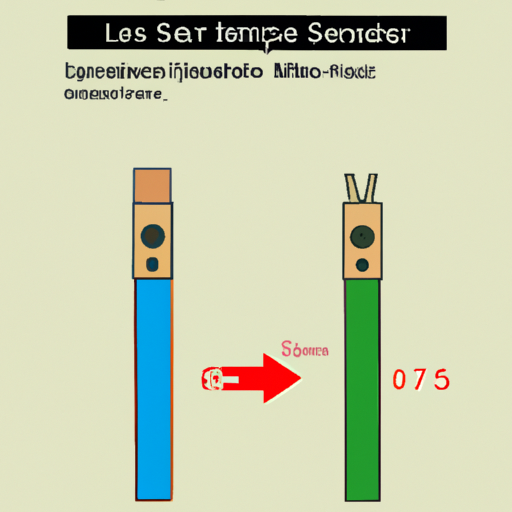
Laser diodes are a crucial component in a wide range of applications, from telecommunications to medical devices to industrial manufacturing. These semiconductor devices emit coherent light through the process of stimulated emission, making them highly efficient and precise sources of light. When selecting a laser diode for a specific application, it is important to consider factors such as wavelength, power output, beam quality, and reliability.There are several classes of laser diodes available on the market, each with its own unique characteristics and advantages. In this article, we will discuss the different classes of laser diodes and provide recommendations for selecting the most suitable component for your specific needs.Class 1 Laser DiodesClass 1 laser diodes are considered to be eye-safe, meaning that they emit low-power laser beams that are not harmful to human eyes. These diodes are typically used in consumer electronics, such as CD and DVD players, barcode scanners, and laser printers. Class 1 laser diodes are also commonly used in medical devices for applications such as laser therapy and dermatology.When selecting a Class 1 laser diode, it is important to consider factors such as wavelength, power output, and beam quality. For consumer electronics applications, a low-power diode with a wavelength in the visible spectrum (e.g., 650 nm for red lasers) may be suitable. For medical applications, a higher-power diode with a specific wavelength for targeted tissue absorption may be required.Class 2 Laser DiodesClass 2 laser diodes are also considered to be eye-safe, but they emit slightly higher-power laser beams than Class 1 diodes. These diodes are commonly used in laser pointers, leveling devices, and other consumer electronics applications where a visible laser beam is required. Class 2 laser diodes are also used in industrial alignment and positioning systems.When selecting a Class 2 laser diode, it is important to consider factors such as power output, beam divergence, and beam quality. For consumer electronics applications, a low-power diode with a visible wavelength (e.g., 532 nm for green lasers) may be suitable. For industrial applications, a higher-power diode with a narrow beam divergence and high beam quality may be required.Class 3 Laser DiodesClass 3 laser diodes emit medium-power laser beams that can be harmful to human eyes if viewed directly. These diodes are commonly used in industrial cutting, welding, and engraving applications, as well as in medical devices for surgical procedures. Class 3 laser diodes are also used in research and development for scientific experiments and testing.When selecting a Class 3 laser diode, it is important to consider factors such as power output, wavelength, beam quality, and reliability. For industrial applications, a high-power diode with a specific wavelength for material absorption may be required. For medical applications, a diode with precise control over power output and beam characteristics may be necessary.Class 4 Laser DiodesClass 4 laser diodes emit high-power laser beams that are capable of causing serious injury to human eyes and skin. These diodes are used in industrial cutting, welding, and drilling applications, as well as in military and defense systems for target designation and range finding. Class 4 laser diodes are also used in scientific research for high-energy physics experiments and laser spectroscopy.When selecting a Class 4 laser diode, it is important to consider factors such as power output, wavelength, beam quality, and safety features. For industrial applications, a high-power diode with a specific wavelength for material processing may be required. For military applications, a diode with precise control over power output and beam characteristics may be necessary.In conclusion, when selecting a laser diode for a specific application, it is important to consider factors such as wavelength, power output, beam quality, and reliability. The class of laser diode will depend on the specific requirements of the application, as well as safety considerations for human exposure to laser radiation. By carefully evaluating these factors and selecting the most suitable laser diode component, you can ensure the success of your project and achieve optimal performance in your application.
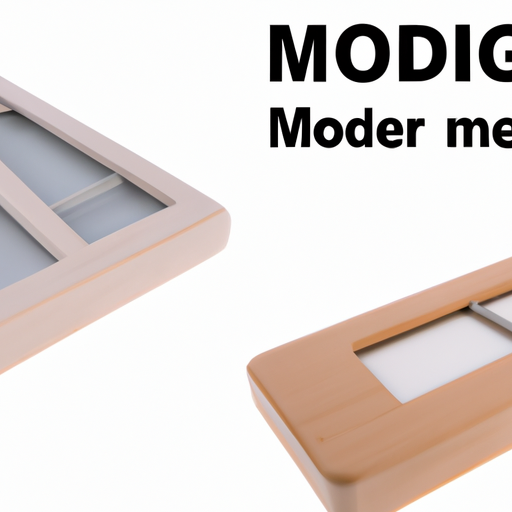
The visible light device components market is constantly evolving, with new technologies and innovations being introduced regularly. As a result, there are several purchasing models available for businesses looking to acquire the latest visible light device components. In this article, we will explore some of the most common purchasing models and discuss their advantages and disadvantages.One of the most popular purchasing models for visible light device components is the traditional procurement model. In this model, businesses purchase components directly from manufacturers or distributors. This model offers businesses a high degree of control over the sourcing and procurement process, allowing them to negotiate prices and terms directly with suppliers. However, this model can be time-consuming and resource-intensive, as businesses must invest time and effort in researching suppliers, obtaining quotes, and negotiating contracts.Another common purchasing model for visible light device components is the outsourcing model. In this model, businesses outsource the procurement of components to a third-party procurement service provider. This model can be beneficial for businesses that do not have the resources or expertise to manage the procurement process internally. Outsourcing procurement can also help businesses reduce costs and improve efficiency by leveraging the expertise and buying power of a third-party provider. However, businesses must carefully vet potential providers to ensure they have the necessary expertise and experience to meet their specific procurement needs.A third purchasing model for visible light device components is the subscription model. In this model, businesses pay a recurring fee to access a curated selection of components from a subscription service provider. This model can be beneficial for businesses that require a steady supply of components on an ongoing basis, as it provides a predictable cost structure and eliminates the need for upfront capital investment. However, businesses must carefully evaluate the terms and conditions of the subscription service to ensure they are getting the components they need at a competitive price.Finally, some businesses may choose to adopt a hybrid purchasing model for visible light device components. In this model, businesses combine elements of the traditional procurement, outsourcing, and subscription models to create a customized procurement strategy that meets their specific needs. For example, a business may choose to outsource the procurement of certain components while purchasing others directly from manufacturers. This model allows businesses to leverage the benefits of multiple purchasing models while mitigating their respective drawbacks.In conclusion, there are several purchasing models available for businesses looking to acquire the latest visible light device components. Each model has its own advantages and disadvantages, and businesses must carefully evaluate their specific needs and requirements to determine which model is best suited to their unique circumstances. By choosing the right purchasing model, businesses can ensure they have access to the components they need to stay competitive in the rapidly evolving visible light device components market.

Ultraviolet (UV) light is a type of electromagnetic radiation that is invisible to the human eye. It has a shorter wavelength than visible light, making it higher in energy. UV light is commonly used in various industrial processes, such as curing coatings and inks, disinfecting water and air, and sterilizing surfaces. In this article, we will explore the mainstream UV production process, including the different types of UV light, the sources of UV light, and the applications of UV light in various industries.Types of UV LightThere are three main types of UV light: UV-A, UV-B, and UV-C. UV-A has the longest wavelength (315-400 nm) and is the least harmful type of UV light. It is commonly used in tanning beds and black lights. UV-B has a medium wavelength (280-315 nm) and is responsible for causing sunburn and skin cancer. UV-C has the shortest wavelength (100-280 nm) and is the most harmful type of UV light. It is commonly used for disinfection and sterilization purposes.Sources of UV LightThere are several sources of UV light, including mercury vapor lamps, xenon lamps, and light-emitting diodes (LEDs). Mercury vapor lamps are the most common source of UV light and are used in various industrial processes. They produce UV light by passing an electric current through a mercury vapor-filled tube, which emits UV radiation when excited. Xenon lamps are another type of UV light source that produces UV light by passing an electric current through a xenon gas-filled tube. LEDs are a newer type of UV light source that produce UV light by passing an electric current through a semiconductor material.Mainstream UV Production ProcessThe mainstream UV production process involves several steps, including the generation of UV light, the control of UV light intensity and wavelength, and the delivery of UV light to the target surface. The following is a detailed description of the mainstream UV production process:1. Generation of UV Light: The first step in the UV production process is the generation of UV light. This is typically done using a mercury vapor lamp, xenon lamp, or LED. The UV light source is powered by an electrical current, which excites the mercury vapor, xenon gas, or semiconductor material, causing it to emit UV radiation.2. Control of UV Light Intensity and Wavelength: Once the UV light is generated, it must be controlled to ensure the desired intensity and wavelength. This is typically done using a UV filter, which blocks unwanted wavelengths of light and allows only the desired UV wavelengths to pass through. The intensity of the UV light can also be controlled by adjusting the power supply to the UV light source.3. Delivery of UV Light to the Target Surface: The final step in the UV production process is the delivery of UV light to the target surface. This is typically done using a UV curing system, which consists of a UV light source, a reflector, and a conveyor belt. The UV light is directed onto the target surface using the reflector, while the conveyor belt moves the target surface through the UV light to ensure uniform exposure.Applications of UV LightUV light has a wide range of applications in various industries, including the following:1. UV Curing: UV light is commonly used in the curing of coatings, inks, and adhesives. UV-curable materials contain photoinitiators that react with UV light to polymerize the material, creating a durable and scratch-resistant finish.2. Water and Air Disinfection: UV light is used to disinfect water and air by destroying the DNA of microorganisms, such as bacteria, viruses, and algae. UV disinfection systems are commonly used in water treatment plants, swimming pools, and HVAC systems.3. Surface Sterilization: UV light is used to sterilize surfaces in hospitals, laboratories, and food processing facilities. UV sterilization systems can kill up to 99.9% of bacteria and viruses on surfaces, reducing the risk of contamination and infection.4. Phototherapy: UV light is used in phototherapy to treat skin conditions, such as psoriasis, eczema, and vitiligo. UV light therapy involves exposing the skin to controlled doses of UV light to reduce inflammation and promote healing.In conclusion, the mainstream UV production process involves the generation of UV light, the control of UV light intensity and wavelength, and the delivery of UV light to the target surface. UV light has a wide range of applications in various industries, including curing coatings and inks, disinfecting water and air, sterilizing surfaces, and treating skin conditions. As technology continues to advance, the use of UV light is expected to increase in the future, providing new opportunities for innovation and growth in the UV industry.

Infrared technology has become increasingly popular in recent years, with a wide range of applications in various industries. From security systems to medical imaging, infrared technology offers a unique way to detect and measure heat and radiation. In this article, we will explore some of the most common infrared popular models and their uses.1. FLIR SystemsFLIR Systems is a leading manufacturer of infrared cameras and thermal imaging systems. Their products are used in a wide range of applications, including building inspections, electrical maintenance, and firefighting. FLIR cameras are known for their high resolution and accuracy, making them a popular choice among professionals in various industries.One of the most popular models from FLIR Systems is the FLIR E8 thermal imaging camera. This camera features a high-resolution sensor and advanced image processing algorithms, allowing users to detect even the smallest temperature differences. The FLIR E8 is commonly used for building inspections, HVAC maintenance, and electrical troubleshooting.2. Seek ThermalSeek Thermal is another popular manufacturer of infrared cameras and thermal imaging systems. Their products are known for their compact size and affordability, making them a popular choice among hobbyists and DIY enthusiasts. Seek Thermal cameras are compatible with smartphones and tablets, allowing users to easily capture and analyze thermal images on the go.One of the most popular models from Seek Thermal is the Seek Compact Pro thermal imaging camera. This camera features a high-resolution sensor and a wide temperature range, making it suitable for a wide range of applications. The Seek Compact Pro is commonly used for home inspections, automotive diagnostics, and outdoor activities.3. FlukeFluke is a well-known manufacturer of test and measurement equipment, including infrared cameras and thermal imaging systems. Their products are used in a wide range of industries, including manufacturing, aerospace, and automotive. Fluke cameras are known for their durability and reliability, making them a popular choice among professionals in demanding environments.One of the most popular models from Fluke is the Fluke Ti450 thermal imaging camera. This camera features a high-resolution sensor and advanced image processing capabilities, allowing users to quickly and accurately detect temperature differences. The Fluke Ti450 is commonly used for predictive maintenance, electrical inspections, and industrial troubleshooting.4. TestoTesto is a leading manufacturer of measurement instruments, including infrared cameras and thermal imaging systems. Their products are used in a wide range of applications, including building inspections, food safety, and environmental monitoring. Testo cameras are known for their user-friendly interface and intuitive design, making them a popular choice among professionals and beginners alike.One of the most popular models from Testo is the Testo 875 thermal imaging camera. This camera features a high-resolution sensor and a wide temperature range, making it suitable for a wide range of applications. The Testo 875 is commonly used for building inspections, HVAC maintenance, and energy audits.In conclusion, infrared technology has become increasingly popular in recent years, with a wide range of applications in various industries. From security systems to medical imaging, infrared technology offers a unique way to detect and measure heat and radiation. The models mentioned above are just a few examples of the many infrared cameras and thermal imaging systems available on the market today. Whether you are a professional looking for a high-end camera or a hobbyist looking for an affordable option, there is a model out there to suit your needs.
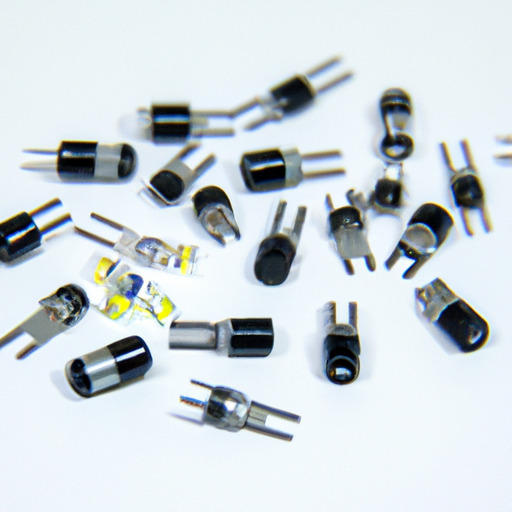
LED transmitters are an essential component in many modern electronic devices, allowing for the transmission of data through light signals. These transmitters are made up of several key components and modules that work together to ensure efficient and reliable data transmission. In this article, we will explore the various components and modules that make up an LED transmitter and how they work together to transmit data effectively.LED transmitters typically consist of the following components:1. Light Emitting Diode (LED): The LED is the core component of the transmitter, responsible for emitting light signals that carry data. LEDs are semiconductor devices that emit light when an electric current passes through them. In LED transmitters, the LED is modulated to encode data into the light signal, allowing for the transmission of information.2. Driver Circuit: The driver circuit is responsible for controlling the current that passes through the LED, ensuring that it emits light at the desired intensity and frequency. The driver circuit also modulates the current to encode data into the light signal, allowing for the transmission of information.3. Optical Lens: The optical lens is used to focus and direct the light emitted by the LED, ensuring that it is transmitted in the desired direction and with the desired intensity. The optical lens helps to improve the efficiency and range of the transmitter by concentrating the light signal.4. Power Supply: The power supply provides the necessary voltage and current to power the LED transmitter. It converts the input voltage from a power source into the appropriate levels required to operate the LED and driver circuit. The power supply is an essential component of the transmitter, ensuring that it operates reliably and efficiently.5. Control Circuit: The control circuit is responsible for managing the operation of the LED transmitter, including controlling the modulation of the LED, monitoring the input data signal, and managing power consumption. The control circuit ensures that the transmitter operates effectively and reliably, transmitting data accurately.6. Data Input Interface: The data input interface allows for the connection of external devices, such as computers or microcontrollers, to the LED transmitter. It provides a means for inputting data signals that are encoded and transmitted by the LED transmitter. The data input interface is essential for integrating the transmitter into a larger data communication system.7. Housing and Enclosure: The housing and enclosure provide physical protection for the components of the LED transmitter, shielding them from environmental factors such as dust, moisture, and physical damage. The housing also helps to contain the light emitted by the LED, ensuring that it is transmitted in the desired direction.In addition to these components, LED transmitters may also include various modules and features to enhance their performance and functionality. Some common modules and features found in LED transmitters include:1. Modulation Techniques: LED transmitters may use various modulation techniques to encode data into the light signal, such as amplitude modulation (AM), frequency modulation (FM), or pulse-width modulation (PWM). These techniques allow for the transmission of data at different rates and with varying levels of complexity.2. Error Correction: Some LED transmitters may include error correction mechanisms to ensure the accuracy of data transmission. Error correction algorithms can detect and correct errors in the transmitted data, improving the reliability of the communication link.3. Beamforming: Beamforming technology may be used in LED transmitters to focus the light signal in a specific direction, improving the range and efficiency of data transmission. Beamforming allows for the targeted transmission of data to specific receivers, reducing interference and improving signal quality.4. Multiple Input, Multiple Output (MIMO): MIMO technology may be employed in LED transmitters to transmit multiple data streams simultaneously, improving the data rate and reliability of communication. MIMO allows for the use of multiple antennas to transmit and receive data, increasing the capacity and efficiency of the communication link.5. Networking Protocols: LED transmitters may support various networking protocols, such as Wi-Fi, Bluetooth, or Zigbee, to enable communication with different types of devices and networks. These protocols define the rules and procedures for data transmission, ensuring compatibility and interoperability with other devices.In conclusion, LED transmitters are complex devices that consist of several key components and modules working together to transmit data through light signals. These components, such as the LED, driver circuit, optical lens, power supply, control circuit, data input interface, and housing, are essential for the operation of the transmitter. Additionally, various modules and features, such as modulation techniques, error correction, beamforming, MIMO, and networking protocols, may be included to enhance the performance and functionality of the transmitter. By understanding the components and modules of LED transmitters, we can appreciate the technology behind these devices and their role in modern data communication systems.
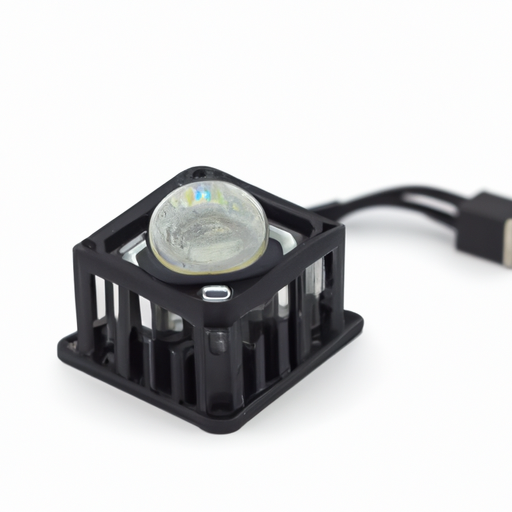
The market size of LED transmitters is rapidly growing as the demand for efficient and reliable communication technologies continues to increase. LED transmitters, also known as light-emitting diode transmitters, are devices that use light to transmit data wirelessly. They are commonly used in applications such as indoor positioning systems, Li-Fi (light fidelity) communication, and optical wireless communication.According to a report by Market Research Future, the global LED transmitter market is expected to reach a value of $1.5 billion by 2023, growing at a CAGR of 18% during the forecast period. This growth can be attributed to the increasing adoption of LED transmitters in various industries such as healthcare, retail, automotive, and aerospace.One of the key drivers of the LED transmitter market is the growing demand for high-speed and secure communication technologies. LED transmitters offer several advantages over traditional radio frequency (RF) communication technologies, including higher data transfer rates, lower latency, and improved security. As a result, they are increasingly being used in applications that require fast and reliable data transmission, such as indoor navigation systems and smart lighting solutions.Another factor driving the growth of the LED transmitter market is the increasing adoption of Li-Fi technology. Li-Fi is a wireless communication technology that uses light to transmit data, offering several advantages over traditional Wi-Fi technology, including higher data transfer rates and increased security. As a result, Li-Fi technology is being increasingly adopted in applications such as smart homes, smart cities, and industrial automation.In addition to these factors, the growing demand for energy-efficient communication technologies is also driving the growth of the LED transmitter market. LED transmitters consume less power compared to traditional RF communication technologies, making them an attractive option for applications that require low power consumption, such as IoT devices and wearable technology.The LED transmitter market is also benefiting from advancements in LED technology, which have led to the development of more efficient and reliable LED transmitters. For example, the development of high-brightness LEDs and advanced modulation techniques has enabled LED transmitters to achieve higher data transfer rates and longer transmission distances.In terms of regional market trends, Asia-Pacific is expected to dominate the LED transmitter market during the forecast period, driven by the presence of key players in countries such as China, Japan, and South Korea. North America and Europe are also expected to witness significant growth in the LED transmitter market, fueled by the increasing adoption of Li-Fi technology and the growing demand for energy-efficient communication technologies.Overall, the market size of LED transmitters is expected to continue growing in the coming years, driven by the increasing demand for high-speed, secure, and energy-efficient communication technologies. With advancements in LED technology and the growing adoption of Li-Fi technology, LED transmitters are poised to play a key role in the future of wireless communication.
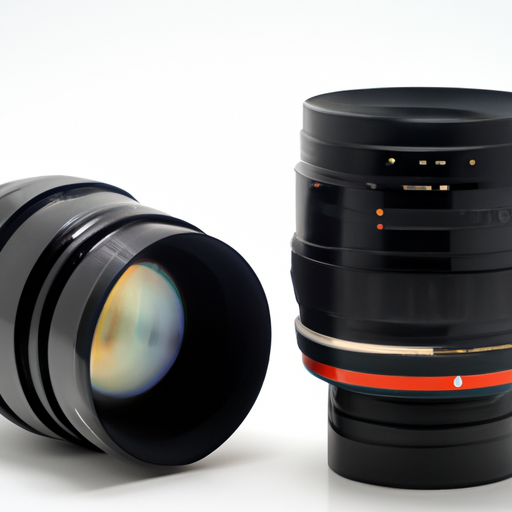
The lens device components market is constantly evolving, with new technologies and innovations being introduced regularly. As a result, there are several purchasing models available for those looking to acquire the latest lens device components. In this article, we will explore some of the most common purchasing models in the industry today.1. Direct Purchase:
One of the most straightforward ways to acquire lens device components is through direct purchase from manufacturers or authorized distributors. This model allows buyers to purchase components directly from the source, ensuring that they are getting genuine products and the latest technology. Direct purchase also allows for greater control over the purchasing process, as buyers can negotiate pricing and terms directly with the supplier.2. Subscription Model:
Another popular purchasing model for lens device components is the subscription model. This model allows buyers to pay a monthly or annual fee to access a range of components and services. Subscriptions can be tailored to the specific needs of the buyer, allowing for flexibility and scalability. This model is particularly popular among businesses that require regular access to the latest components without the upfront cost of purchasing them outright.3. Leasing:
Leasing is another common purchasing model for lens device components, particularly for businesses that require components for a specific project or period of time. Leasing allows buyers to access the latest components without the upfront cost of purchasing them outright. Leasing agreements typically include maintenance and support services, making it a convenient option for businesses that require ongoing support for their components.4. Pay-Per-Use:
Pay-per-use is a purchasing model that allows buyers to pay for lens device components based on their usage. This model is particularly popular among businesses that require components on a temporary or ad-hoc basis. Pay-per-use agreements typically include a usage fee, which is based on the amount of time the components are used. This model allows for greater flexibility and cost control, as buyers only pay for the components they actually use.5. Bundled Packages:
Bundled packages are another popular purchasing model for lens device components. This model allows buyers to purchase a package of components at a discounted price. Bundled packages typically include a range of components that are commonly used together, such as lenses, filters, and adapters. This model is particularly popular among hobbyists and enthusiasts who require a range of components for their photography or videography projects.6. Online Marketplaces:
Online marketplaces are another popular purchasing model for lens device components. Online marketplaces allow buyers to browse a wide range of components from various manufacturers and suppliers, making it easy to compare prices and features. Online marketplaces also offer a convenient purchasing process, with many platforms offering secure payment options and fast shipping. This model is particularly popular among consumers who prefer to shop online and have access to a wide range of products.In conclusion, there are several purchasing models available for those looking to acquire the latest lens device components. Whether you prefer to purchase components directly from manufacturers, subscribe to a service, lease components, pay-per-use, purchase bundled packages, or shop on online marketplaces, there is a purchasing model to suit your needs. By exploring the various purchasing models available, you can find the best option for acquiring the latest lens device components for your projects.

Display borders are an essential component of any electronic device that has a screen, such as smartphones, tablets, laptops, and televisions. The border, also known as the bezel, is the frame that surrounds the display and separates it from the rest of the device. While the primary function of the display border is to provide structural support and protection for the screen, it also plays a significant role in the overall design and aesthetics of the device.There are several mainstream models of display borders that are commonly used in electronic devices. Each model has its own unique characteristics and features that cater to different preferences and requirements. In this article, we will explore some of the most popular display border models and discuss their advantages and disadvantages.1. Thin bezel design:One of the most popular display border models in recent years is the thin bezel design. This model features a minimalistic border that is slim and sleek, giving the device a modern and stylish look. Thin bezels are commonly found in smartphones, laptops, and televisions, where the focus is on maximizing the screen-to-body ratio and creating a more immersive viewing experience.The main advantage of a thin bezel design is that it allows for a larger display area without increasing the overall size of the device. This is particularly beneficial for smartphones and laptops, where users want a compact and portable device with a spacious screen. Additionally, thin bezels can enhance the visual appeal of the device and make it look more premium and high-end.However, there are some drawbacks to thin bezel designs as well. One of the main concerns is durability, as the slim border may not provide as much protection for the screen against accidental drops or impacts. Additionally, some users may find it challenging to hold the device without accidentally touching the screen due to the narrow border.2. Standard bezel design:The standard bezel design is a traditional model that features a thicker border around the display. This model is commonly used in older electronic devices and budget-friendly options where cost and durability are prioritized over aesthetics. Standard bezels provide more protection for the screen and make it easier to hold the device without touching the display accidentally.While standard bezels may not be as visually appealing as thin bezels, they have their own advantages. The thicker border allows for more space to incorporate additional features, such as front-facing speakers, cameras, and sensors. This can enhance the functionality of the device and provide a better user experience.However, one of the main drawbacks of standard bezels is that they can make the device look bulkier and less modern compared to devices with thin bezels. Additionally, the larger border may reduce the screen-to-body ratio and make the display appear smaller than it actually is.3. Curved edge design:Another popular display border model is the curved edge design, which features a border that slopes gently towards the edges of the screen. This model is commonly found in high-end smartphones and televisions, where the focus is on creating a more immersive and visually stunning display.The main advantage of a curved edge design is that it can enhance the viewing experience by reducing reflections and glare on the screen. The curved border also creates a more seamless and bezel-less look, making the device appear more futuristic and premium. Additionally, the curved edges can make the device more comfortable to hold and use, as they provide a smoother and more ergonomic grip.However, there are some drawbacks to curved edge designs as well. One of the main concerns is durability, as the curved border may be more susceptible to damage from accidental drops or impacts. Additionally, the curved edges can make it challenging to incorporate additional features, such as physical buttons or sensors, which may limit the functionality of the device.4. Dual-edge design:The dual-edge design is a variation of the curved edge model that features curved borders on both sides of the screen. This design is commonly found in smartphones and televisions, where the focus is on creating a more immersive and visually striking display.The main advantage of a dual-edge design is that it can enhance the viewing experience by creating a wraparound effect that draws the user's attention towards the screen. The curved borders on both sides of the display can also make the device appear more sleek and futuristic, giving it a unique and premium look.However, there are some drawbacks to dual-edge designs as well. One of the main concerns is usability, as the curved edges may make it challenging to hold the device without accidentally touching the screen. Additionally, the curved borders can limit the space available for additional features, such as physical buttons or sensors, which may impact the functionality of the device.In conclusion, display borders play a crucial role in the design and functionality of electronic devices. There are several mainstream models of display borders, each with its own unique characteristics and features. Whether you prefer a thin bezel design for a modern and sleek look, a standard bezel design for durability and functionality, a curved edge design for a more immersive viewing experience, or a dual-edge design for a unique and premium look, there is a display border model to suit every preference and requirement. Ultimately, the choice of display border model will depend on your personal preferences, usage habits, and budget.
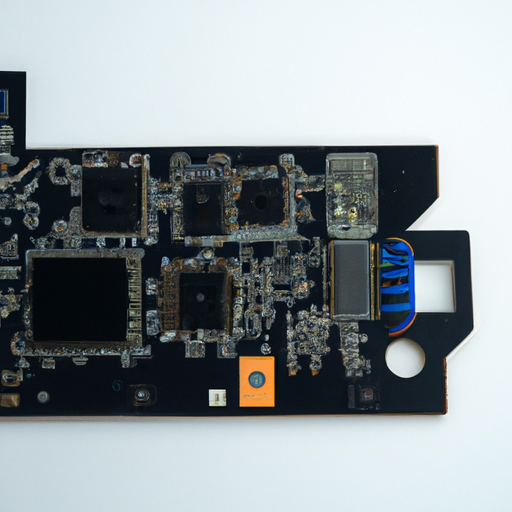
The display module is an essential component in many electronic devices, including smartphones, tablets, laptops, televisions, and more. It is responsible for presenting visual information to the user in a clear and understandable way. In this article, we will explore how the display module works, its different types, and its importance in modern technology.The display module, also known as a screen or monitor, consists of several key components that work together to create images and text. These components include a backlight, liquid crystal display (LCD) or organic light-emitting diode (OLED) panel, and a driver circuit.The backlight is the first component in the display module. It provides the necessary illumination for the screen to be visible. In LCD displays, the backlight is typically a cold cathode fluorescent lamp (CCFL) or light-emitting diode (LED) array located behind the LCD panel. In OLED displays, each pixel emits its own light, eliminating the need for a separate backlight.The LCD or OLED panel is the next component in the display module. It is made up of millions of tiny pixels that can change color and brightness to create images. In LCD displays, each pixel consists of a liquid crystal layer sandwiched between two polarizing filters. When an electric current is applied to the liquid crystal, it changes its orientation, allowing light to pass through or be blocked, depending on the pixel's color and brightness. In OLED displays, each pixel contains organic compounds that emit light when an electric current is applied.The driver circuit is the final component in the display module. It controls the operation of the backlight and the individual pixels in the LCD or OLED panel. The driver circuit receives signals from the device's processor and converts them into the appropriate voltages and currents to drive the display. It also manages the refresh rate, color depth, and other display settings.There are several types of display modules available in the market, each with its own advantages and disadvantages. The most common types include:1. LCD displays: LCD displays are widely used in devices such as smartphones, laptops, and televisions. They offer good image quality, high resolution, and low power consumption. However, they have limited viewing angles and slower response times compared to OLED displays.2. OLED displays: OLED displays are becoming increasingly popular due to their vibrant colors, high contrast ratio, and fast response times. They also have wider viewing angles and better energy efficiency than LCD displays. However, OLED displays are more expensive to manufacture and are susceptible to burn-in issues.3. E-ink displays: E-ink displays are commonly used in e-readers such as the Amazon Kindle. They offer excellent readability in direct sunlight, low power consumption, and a paper-like appearance. However, they have slower refresh rates and limited color capabilities compared to LCD and OLED displays.4. AMOLED displays: AMOLED displays are a type of OLED display that uses an active matrix to control each pixel individually. They offer even better image quality, faster response times, and lower power consumption than traditional OLED displays. However, AMOLED displays are more expensive to produce and are prone to screen burn-in.The display module plays a crucial role in modern technology, enabling users to interact with electronic devices in a visual and intuitive way. It is used in a wide range of applications, from smartphones and tablets to digital signage and medical devices. As technology continues to advance, display modules are expected to become even more sophisticated, with higher resolutions, faster refresh rates, and improved energy efficiency.In conclusion, the display module is a vital component in electronic devices, providing users with a visual interface to interact with technology. It consists of a backlight, LCD or OLED panel, and driver circuit that work together to create images and text. There are several types of display modules available, each with its own strengths and weaknesses. As technology evolves, display modules are expected to become more advanced, offering better image quality, faster response times, and improved energy efficiency.
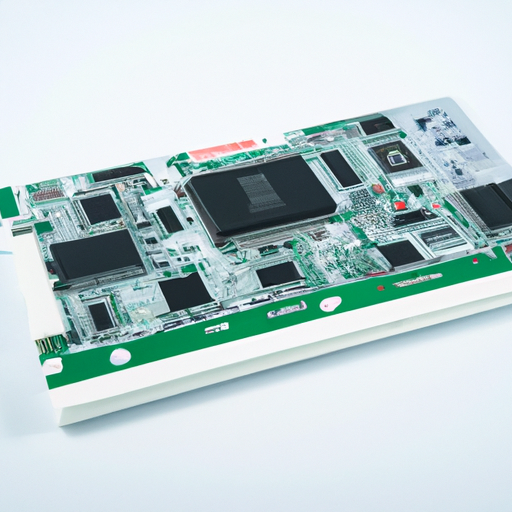
Display modules are an essential component in many electronic devices, providing users with a visual interface to interact with the device. These modules come in various sizes, resolutions, and technologies, each offering unique features and capabilities. In this article, we will explore the latest display module specifications and how they are shaping the future of electronic devices.One of the key specifications to consider when choosing a display module is the size of the screen. Display modules come in a range of sizes, from small screens used in smartwatches and fitness trackers to large screens found in televisions and computer monitors. The size of the screen will determine the overall form factor of the device and the user experience. Larger screens are ideal for devices that require a lot of visual information, such as gaming consoles or multimedia devices, while smaller screens are suitable for wearable devices or compact gadgets.Resolution is another important specification to consider when choosing a display module. Resolution refers to the number of pixels that make up the display, with higher resolutions offering sharper and more detailed images. The most common resolutions for display modules are HD (1280x720 pixels), Full HD (1920x1080 pixels), and 4K (3840x2160 pixels). Higher resolution displays are becoming more popular as consumers demand better image quality for watching videos, playing games, and browsing the web.Another important specification to consider is the display technology used in the module. There are several types of display technologies available, each offering unique advantages and disadvantages. The most common display technologies include LCD (Liquid Crystal Display), OLED (Organic Light Emitting Diode), and AMOLED (Active Matrix Organic Light Emitting Diode). LCD displays are known for their energy efficiency and affordability, while OLED and AMOLED displays offer better color reproduction and contrast ratios.Refresh rate is another important specification to consider when choosing a display module. Refresh rate refers to the number of times the display updates per second, measured in Hertz (Hz). A higher refresh rate results in smoother motion and reduced motion blur, making it ideal for gaming and fast-paced video content. The most common refresh rates for display modules are 60Hz, 120Hz, and 240Hz, with higher refresh rates becoming more popular in gaming monitors and high-end televisions.Touch sensitivity is another important specification to consider when choosing a display module. Touch-sensitive displays allow users to interact with the device using their fingers or a stylus, making it easier to navigate menus, input text, and play games. There are two main types of touch-sensitive displays: resistive and capacitive. Resistive displays use pressure to detect touch input, while capacitive displays use electrical signals. Capacitive displays are more responsive and accurate, making them ideal for smartphones and tablets.In conclusion, display modules are an essential component in many electronic devices, providing users with a visual interface to interact with the device. When choosing a display module, it is important to consider specifications such as size, resolution, technology, refresh rate, and touch sensitivity. By understanding these specifications, consumers can make informed decisions when selecting a display module for their electronic devices. As technology continues to advance, display modules will continue to evolve, offering better image quality, responsiveness, and user experiences.
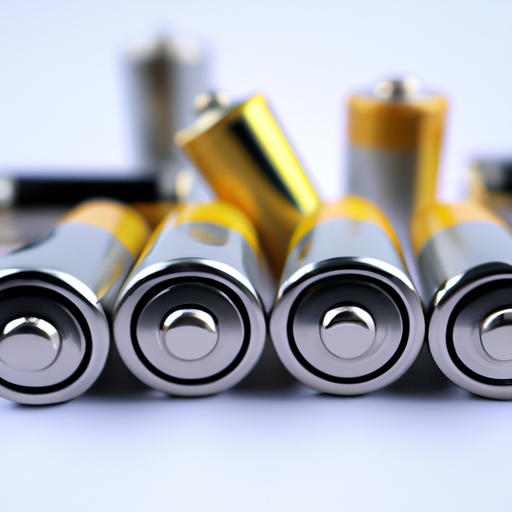
In recent years, there has been a growing demand for non-charging battery devices, as consumers seek more convenient and sustainable power solutions. These devices, which include everything from smartwatches to hearing aids, rely on alternative power sources such as kinetic energy, solar power, or radio frequency signals to operate without the need for regular charging. As the market for non-charging battery devices continues to expand, manufacturers are exploring new purchasing models to make these components more accessible to consumers. In this article, we will explore some of the purchasing models for the latest non-charging battery device components.One of the most common purchasing models for non-charging battery device components is the traditional retail model. In this model, consumers can purchase individual components such as batteries, capacitors, or energy harvesting modules from retailers or online stores. These components can then be integrated into the device by the consumer or a professional technician. This model allows consumers to have more control over the components they use in their devices and can be a cost-effective option for those who are comfortable with DIY projects.Another purchasing model for non-charging battery device components is the subscription model. In this model, consumers pay a monthly or annual fee to access a range of components and services for their devices. This can include regular maintenance and replacement of components, as well as access to new technologies and upgrades. The subscription model can be a convenient option for consumers who want to ensure that their devices are always up-to-date and functioning properly, without the hassle of purchasing individual components.Some manufacturers are also exploring the possibility of offering non-charging battery device components as part of a service package. In this model, consumers would pay a one-time fee for the device itself, as well as a monthly or annual fee for access to a range of services, including maintenance, repairs, and upgrades. This model can provide consumers with peace of mind knowing that their devices are always in good working order, and can also help manufacturers build long-term relationships with their customers.In addition to these traditional purchasing models, some manufacturers are also exploring new ways to make non-charging battery device components more accessible to consumers. One emerging trend is the use of blockchain technology to create decentralized marketplaces for components. In these marketplaces, consumers can purchase components directly from manufacturers or other suppliers, using cryptocurrencies or other digital payment methods. This can help to reduce costs and streamline the purchasing process, making it easier for consumers to find the components they need for their devices.Overall, the market for non-charging battery device components is evolving rapidly, with new purchasing models emerging to meet the needs of consumers. Whether you prefer to purchase individual components, subscribe to a service package, or explore decentralized marketplaces, there are a range of options available to help you power your devices without the need for regular charging. As technology continues to advance, we can expect to see even more innovative purchasing models for non-charging battery device components in the future.
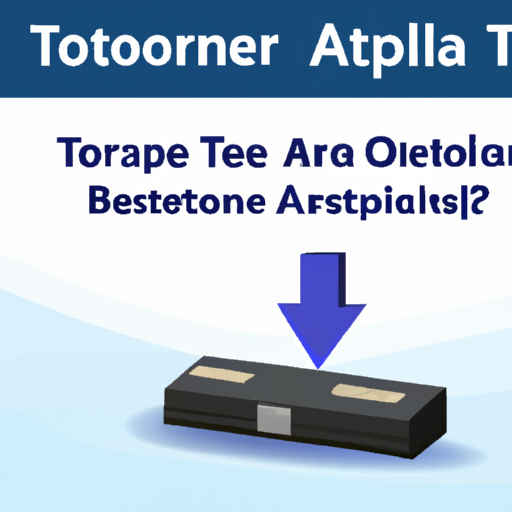
Batteries are an essential component of many electronic devices, from smartphones to laptops to electric vehicles. With the increasing demand for portable power sources, there are a wide variety of battery models available in the market. In this article, we will explore the top 10 popular battery models in the mainstream.1. Lithium-ion (Li-ion) Batteries
Lithium-ion batteries are one of the most popular battery models in the mainstream. They are widely used in smartphones, laptops, and electric vehicles due to their high energy density and long cycle life. Li-ion batteries are known for their lightweight and compact design, making them ideal for portable devices.2. Nickel-metal hydride (NiMH) Batteries
Nickel-metal hydride batteries are another popular battery model in the mainstream. They are commonly used in rechargeable batteries for consumer electronics, such as digital cameras and cordless phones. NiMH batteries have a higher energy density than nickel-cadmium batteries and are more environmentally friendly.3. Lead-acid Batteries
Lead-acid batteries are one of the oldest and most widely used battery models in the mainstream. They are commonly used in automotive applications, such as starting, lighting, and ignition (SLI) batteries for cars and trucks. Lead-acid batteries are known for their low cost and high reliability.4. Alkaline Batteries
Alkaline batteries are a popular battery model in the mainstream for powering a wide range of consumer electronics, such as remote controls, flashlights, and toys. They are known for their long shelf life and high energy density, making them ideal for devices that require a steady source of power.5. Zinc-carbon Batteries
Zinc-carbon batteries are another popular battery model in the mainstream. They are commonly used in low-drain devices, such as clocks, radios, and calculators. Zinc-carbon batteries are known for their low cost and availability, making them a popular choice for everyday use.6. Lithium Polymer (LiPo) Batteries
Lithium polymer batteries are a popular battery model in the mainstream for powering drones, remote-controlled vehicles, and other high-performance devices. LiPo batteries are known for their high energy density and lightweight design, making them ideal for applications that require a high power-to-weight ratio.7. Nickel-cadmium (NiCd) Batteries
Nickel-cadmium batteries are a popular battery model in the mainstream for powering cordless power tools, emergency lighting, and other industrial applications. NiCd batteries are known for their high discharge rates and long cycle life, making them ideal for high-drain applications.8. Lithium Iron Phosphate (LiFePO4) Batteries
Lithium iron phosphate batteries are a popular battery model in the mainstream for powering electric vehicles, solar energy storage systems, and other high-power applications. LiFePO4 batteries are known for their high energy density, long cycle life, and excellent thermal stability, making them a popular choice for demanding applications.9. Silver-oxide Batteries
Silver-oxide batteries are a popular battery model in the mainstream for powering watches, hearing aids, and other small electronic devices. They are known for their high energy density and long shelf life, making them ideal for devices that require a reliable source of power.10. Zinc-air Batteries
Zinc-air batteries are a popular battery model in the mainstream for powering hearing aids, watches, and other small electronic devices. They are known for their high energy density and long runtime, making them ideal for devices that require a long-lasting power source.In conclusion, there are a wide variety of battery models available in the mainstream, each with its own unique characteristics and applications. Whether you are looking for a lightweight and compact power source for your smartphone or a high-power battery for your electric vehicle, there is a battery model that will meet your needs. By understanding the different types of batteries available, you can choose the best model for your specific application and ensure reliable power for your devices.
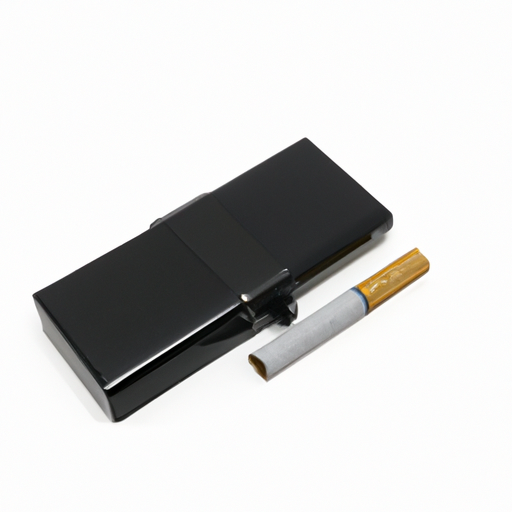
on the harmful effects of cigarette smoke on the human body and the environment. This article will provide a comprehensive overview of the various components of cigarette smoke and their impact on health, as well as the environmental consequences of smoking.IntroductionCigarette smoking is a major public health concern, responsible for millions of deaths worldwide each year. The harmful effects of smoking are well-documented, with numerous studies linking it to a wide range of health problems, including cancer, heart disease, and respiratory disorders. In addition to the impact on human health, smoking also has significant environmental consequences, contributing to air pollution, deforestation, and littering. In this article, we will explore the various components of cigarette smoke and their effects on both the human body and the environment.Components of Cigarette SmokeCigarette smoke is a complex mixture of over 7,000 chemicals, many of which are harmful to human health. The main components of cigarette smoke include nicotine, tar, carbon monoxide, and various carcinogens. Nicotine is the addictive substance in cigarettes, responsible for the physical and psychological dependence that makes it difficult for smokers to quit. Tar is a sticky residue that coats the lungs and airways, leading to respiratory problems and an increased risk of lung cancer. Carbon monoxide is a poisonous gas that reduces the amount of oxygen in the blood, putting strain on the heart and increasing the risk of heart disease. Carcinogens are chemicals that can cause cancer, with cigarette smoke containing over 70 known carcinogens, including benzene, formaldehyde, and arsenic.Health Effects of Cigarette SmokeThe health effects of cigarette smoke are well-documented and far-reaching. Smoking is the leading cause of preventable death worldwide, responsible for around 8 million deaths each year. The harmful effects of smoking extend to almost every organ in the body, with smokers at increased risk of developing a wide range of health problems, including lung cancer, heart disease, stroke, and respiratory disorders such as chronic obstructive pulmonary disease (COPD) and emphysema. Smoking also has a negative impact on reproductive health, increasing the risk of infertility, pregnancy complications, and birth defects. In addition to the direct health effects of smoking, exposure to secondhand smoke is also harmful, with non-smokers exposed to secondhand smoke at increased risk of developing many of the same health problems as smokers.Environmental Consequences of SmokingIn addition to the harmful effects on human health, smoking also has significant environmental consequences. Cigarette butts are the most commonly littered item in the world, with an estimated 4.5 trillion cigarette butts discarded each year. These butts contain toxic chemicals that can leach into the soil and water, contaminating the environment and posing a threat to wildlife. Cigarette smoke also contributes to air pollution, with secondhand smoke containing many of the same harmful chemicals as mainstream smoke. This pollution can have a range of negative effects on the environment, including contributing to climate change, damaging ecosystems, and harming human health.ConclusionIn conclusion, cigarette smoking is a major public health concern with far-reaching consequences for both human health and the environment. The harmful effects of smoking are well-documented, with numerous studies linking it to a wide range of health problems, including cancer, heart disease, and respiratory disorders. In addition to the impact on human health, smoking also has significant environmental consequences, contributing to air pollution, deforestation, and littering. It is important for individuals to be aware of the harmful effects of smoking and to take steps to quit or avoid exposure to secondhand smoke. By doing so, we can protect our health and the health of the planet for future generations.
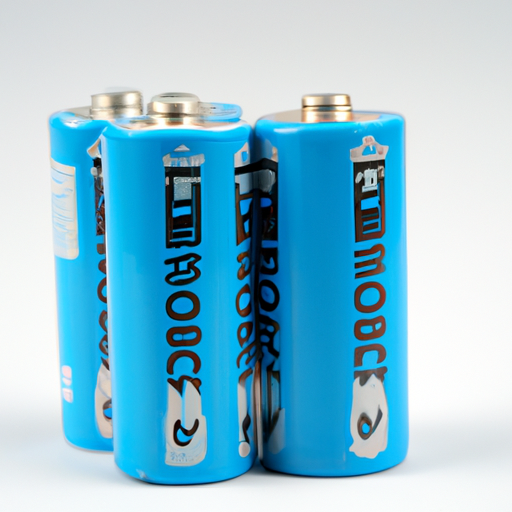
Battery contact 111 products play a crucial role in various practical applications where batteries are used. These products are essential components that ensure a reliable and secure connection between the battery and the device it powers. Without proper battery contacts, the performance and functionality of the device can be compromised, leading to potential safety hazards and operational issues.In this article, we will explore the importance of battery contact 111 products in practical applications, their key features, and the different types available in the market. We will also discuss the factors to consider when selecting battery contacts for specific applications and the benefits they offer in terms of performance, reliability, and safety.Battery contacts are small, metal components that are designed to establish an electrical connection between the battery and the device it powers. They are typically made from materials such as stainless steel, phosphor bronze, or nickel-plated steel, which offer good conductivity and corrosion resistance. Battery contacts come in various shapes and sizes, depending on the type of battery and device they are intended for.One of the primary functions of battery contacts is to provide a secure and stable connection between the battery and the device. This ensures that the electrical current flows smoothly from the battery to the device, allowing it to function properly. Battery contacts also help to maintain a consistent voltage and prevent power loss or fluctuations, which can affect the performance of the device.In practical applications, battery contacts are used in a wide range of devices, including consumer electronics, medical devices, automotive systems, and industrial equipment. They are commonly found in products such as smartphones, laptops, digital cameras, remote controls, and power tools. Battery contacts are also used in battery holders, connectors, and charging docks, where they play a critical role in ensuring the efficient operation of the device.One of the key features of battery contact 111 products is their durability and reliability. These products are designed to withstand repeated use and provide a long service life, even in harsh operating conditions. Battery contacts are often subjected to mechanical stress, temperature fluctuations, and environmental factors, such as moisture and dust. Therefore, they must be made from high-quality materials that can withstand these challenges and maintain their performance over time.Another important feature of battery contacts is their versatility and compatibility with different types of batteries and devices. Battery contacts are available in various configurations, such as spring contacts, leaf spring contacts, and button contacts, which can accommodate different battery sizes and shapes. This flexibility allows manufacturers to design custom battery contacts that meet the specific requirements of their devices and ensure a perfect fit with the battery.When selecting battery contacts for a particular application, several factors should be considered to ensure optimal performance and reliability. These factors include the type of battery used, the voltage and current requirements of the device, the operating environment, and the mechanical constraints of the device. It is essential to choose battery contacts that are compatible with the battery chemistry and design, as well as the electrical specifications of the device.In addition to their functional benefits, battery contacts offer several advantages in terms of safety and performance. By providing a secure connection between the battery and the device, battery contacts help to prevent short circuits, overheating, and other electrical issues that can pose a risk to the user. Battery contacts also help to maximize the efficiency of the device by minimizing power loss and ensuring a stable voltage supply.In conclusion, battery contact 111 products play a critical role in practical applications where batteries are used. These products are essential components that ensure a reliable and secure connection between the battery and the device, enabling optimal performance and safety. By choosing high-quality battery contacts that are compatible with the specific requirements of the device, manufacturers can ensure the efficient operation of their products and enhance the overall user experience.

Battery clips are small but essential components in various electronic devices that require batteries for power. These clips are used to securely hold the battery in place and establish a connection between the battery and the device. They are commonly found in devices such as remote controls, toys, flashlights, and other portable electronics.The main application direction of battery clips is in providing a reliable and secure connection between the battery and the device. This ensures that the device receives the necessary power to function properly. Battery clips come in various shapes and sizes to accommodate different types of batteries, such as AA, AAA, C, and D batteries.One of the key advantages of using battery clips is their ease of installation and replacement. They are designed to be easily attached and detached from the battery, making it convenient for users to replace the battery when needed. This is particularly useful in devices that require frequent battery changes, such as remote controls and toys.Battery clips are also designed to provide a stable and secure connection between the battery and the device. This helps prevent any interruptions in power supply, ensuring that the device operates smoothly and efficiently. The clips are typically made of durable materials such as metal or plastic, which are able to withstand the rigors of everyday use.In addition to their primary function of holding the battery in place and establishing a connection, battery clips also play a role in protecting the battery from damage. They help prevent the battery from coming into contact with other components in the device, which could potentially cause a short circuit or other electrical issues.Battery clips are also used in battery holders, which are devices that hold multiple batteries in place. Battery holders are commonly used in devices that require more than one battery to operate, such as flashlights and portable radios. The clips in the battery holder ensure that each battery is securely held in place and connected to the device.Overall, battery clips play a crucial role in ensuring the proper functioning of electronic devices that rely on batteries for power. Their simple yet essential design makes them a key component in a wide range of applications, from household gadgets to industrial equipment. With their ability to provide a secure and reliable connection between the battery and the device, battery clips are an indispensable part of modern electronics.
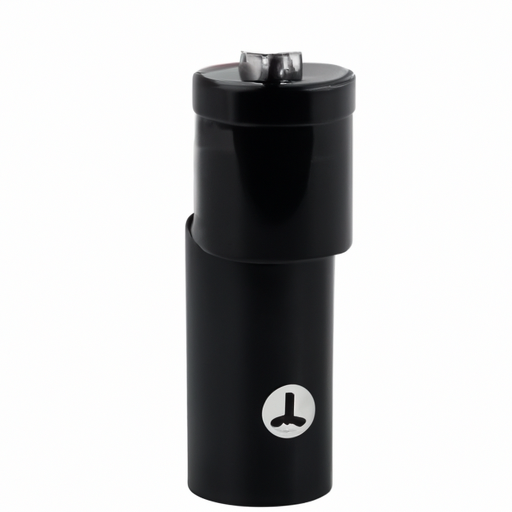
Battery holders are essential components in electronic devices that require batteries for power. They provide a secure and convenient way to hold batteries in place, ensuring proper contact and connection for optimal performance. Battery holders come in various types and configurations to accommodate different battery sizes and types. In this article, we will explore the different product types included in battery holders and their applications.1. Coin Cell Battery Holders:
Coin cell battery holders are designed to hold small, button-shaped batteries commonly used in devices like watches, calculators, and small electronic gadgets. These holders typically have a spring-loaded mechanism that securely holds the battery in place while allowing for easy insertion and removal. Coin cell battery holders come in various configurations, including single, dual, and multiple-cell holders, to accommodate different battery sizes and voltages.2. AA/AAA Battery Holders:
AA and AAA battery holders are designed to hold standard cylindrical batteries commonly used in household devices like remote controls, flashlights, and toys. These holders come in various configurations, including single, dual, and multiple-cell holders, to accommodate different battery sizes and voltages. AA and AAA battery holders may feature spring-loaded contacts or solder terminals for easy connection to the device's circuitry.3. 9V Battery Snap Connectors:
9V battery snap connectors are designed to hold rectangular 9V batteries commonly used in smoke detectors, guitar pedals, and other electronic devices. These connectors typically feature a snap-on design that securely holds the battery in place while allowing for easy insertion and removal. 9V battery snap connectors may also include leads with stripped ends for easy connection to the device's circuitry.4. CR123A Battery Holders:
CR123A battery holders are designed to hold lithium-ion batteries commonly used in high-powered flashlights, cameras, and other electronic devices. These holders typically feature a spring-loaded mechanism or screw terminals for secure battery retention and easy connection to the device's circuitry. CR123A battery holders come in various configurations, including single, dual, and multiple-cell holders, to accommodate different battery sizes and voltages.5. Custom Battery Holders:
In addition to standard battery holders, custom battery holders are also available to accommodate specific battery sizes, shapes, and configurations. Custom battery holders are often designed for specialized applications where standard holders may not be suitable. These holders are typically made to order based on the customer's specifications and requirements.Overall, battery holders play a crucial role in ensuring reliable power supply in electronic devices. By choosing the right type of battery holder for your application, you can ensure proper battery retention, connection, and performance. Whether you need a coin cell holder for a small electronic gadget or a custom holder for a specialized application, there are various options available to meet your needs. Consider the size, voltage, and configuration of your batteries when selecting a battery holder to ensure compatibility and optimal performance.
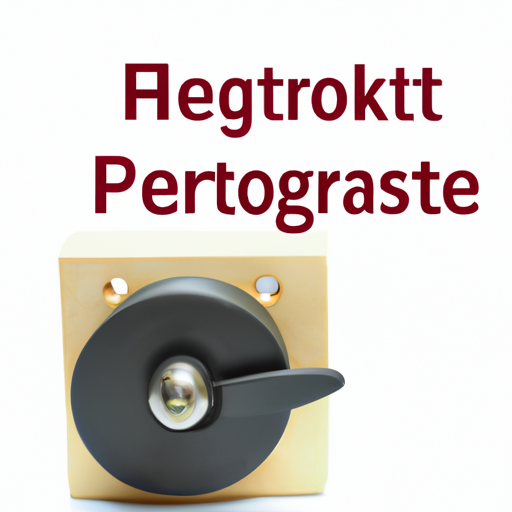
Rheostat is a company that specializes in the production and distribution of electronic components, particularly variable resistors known as rheostats. As a player in the electronics industry, Rheostat operates within a competitive market that is subject to various market policies and regulations. In this article, we will explore the market policies that Rheostat adheres to and how they impact the company's operations.One of the key market policies that Rheostat must comply with is intellectual property rights protection. As a manufacturer of electronic components, Rheostat invests significant resources in research and development to create innovative products that meet the needs of its customers. To protect its intellectual property, Rheostat must ensure that its designs, technologies, and processes are safeguarded through patents, trademarks, and copyrights. By adhering to intellectual property rights protection policies, Rheostat can prevent competitors from copying its products and maintain its competitive edge in the market.Another important market policy that Rheostat must adhere to is product quality and safety regulations. As a manufacturer of electronic components, Rheostat must ensure that its products meet industry standards for quality and safety. This includes conducting rigorous testing and quality control measures to ensure that its products are free from defects and comply with regulatory requirements. By adhering to product quality and safety regulations, Rheostat can build trust with its customers and maintain a positive reputation in the market.In addition to intellectual property rights protection and product quality and safety regulations, Rheostat must also comply with environmental regulations. As a manufacturer of electronic components, Rheostat must ensure that its operations are environmentally sustainable and comply with regulations related to waste management, emissions, and resource conservation. By implementing environmentally friendly practices and complying with environmental regulations, Rheostat can reduce its environmental impact and contribute to a more sustainable future.Furthermore, Rheostat must also adhere to competition policies to ensure fair competition in the market. As a player in the electronics industry, Rheostat must compete with other companies that offer similar products and services. By adhering to competition policies, Rheostat can ensure that its business practices are fair and transparent, and that it does not engage in anti-competitive behavior such as price-fixing or market manipulation. By promoting fair competition, Rheostat can foster innovation and provide customers with a wider range of choices in the market.Overall, Rheostat operates within a competitive market that is subject to various market policies and regulations. By adhering to intellectual property rights protection, product quality and safety regulations, environmental regulations, and competition policies, Rheostat can ensure that its operations are ethical, sustainable, and compliant with industry standards. By following these market policies, Rheostat can maintain its competitive edge in the electronics industry and continue to provide innovative products and services to its customers.
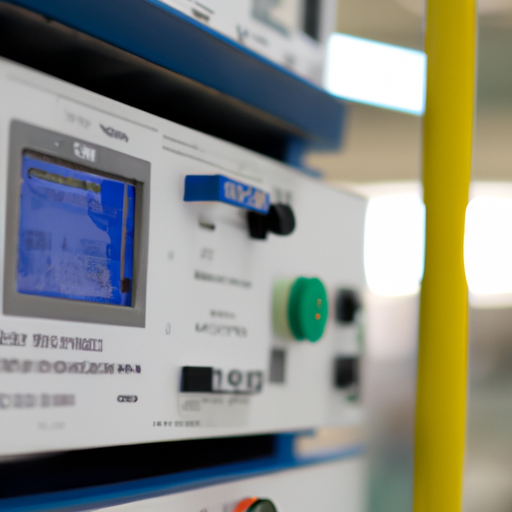
Rotating potential meters, also known as potentiometers, are widely used in various electronic devices to control the voltage or current in a circuit. These devices are essential components in many applications, including audio equipment, lighting controls, and industrial machinery. To ensure the quality and reliability of rotating potential meters, there are specific product standards that manufacturers must adhere to. In this article, we will discuss the product standards for rotating potential meters and why they are important for ensuring the performance and safety of these devices.Product standards for rotating potential meters are established by organizations such as the International Electrotechnical Commission (IEC) and the American National Standards Institute (ANSI). These standards define the requirements and specifications that rotating potential meters must meet to ensure their quality, performance, and safety. Some of the key product standards for rotating potential meters include:1. Electrical specifications: Product standards for rotating potential meters specify the electrical characteristics of the device, such as the rated voltage, current, and resistance. These specifications ensure that the rotating potential meter can safely and accurately control the voltage or current in a circuit without overheating or malfunctioning.2. Mechanical specifications: Product standards also define the mechanical characteristics of rotating potential meters, such as the size, shape, and mounting options. These specifications ensure that the rotating potential meter can be easily installed and integrated into various electronic devices without any compatibility issues.3. Environmental specifications: Rotating potential meters are often used in harsh environments, such as industrial settings or outdoor applications. Product standards specify the environmental conditions that the device can withstand, such as temperature, humidity, and vibration. These specifications ensure that the rotating potential meter can operate reliably in challenging conditions without any performance degradation.4. Safety standards: Product standards for rotating potential meters also include safety requirements to protect users and prevent electrical hazards. These standards specify the insulation, grounding, and protection mechanisms that must be implemented in the device to ensure safe operation and prevent electrical shocks or fires.5. Performance standards: Product standards define the performance characteristics of rotating potential meters, such as accuracy, linearity, and resolution. These standards ensure that the device can provide precise and consistent voltage or current control without any deviations or errors.Compliance with product standards is essential for manufacturers of rotating potential meters to ensure the quality and reliability of their products. By meeting these standards, manufacturers can demonstrate that their rotating potential meters have been tested and certified to meet the requirements for performance, safety, and environmental durability. This can help build trust with customers and ensure that the rotating potential meters will perform as expected in various applications.In addition to meeting product standards, manufacturers of rotating potential meters may also choose to obtain certifications from independent testing laboratories, such as Underwriters Laboratories (UL) or the Canadian Standards Association (CSA). These certifications provide further assurance to customers that the rotating potential meters have been tested and approved by a reputable third party for compliance with industry standards and regulations.Overall, product standards play a crucial role in ensuring the quality, performance, and safety of rotating potential meters. By adhering to these standards, manufacturers can produce reliable and high-quality devices that meet the requirements of various applications. Customers can have confidence in the performance and durability of rotating potential meters that comply with product standards, making them a trusted choice for controlling voltage and current in electronic circuits.
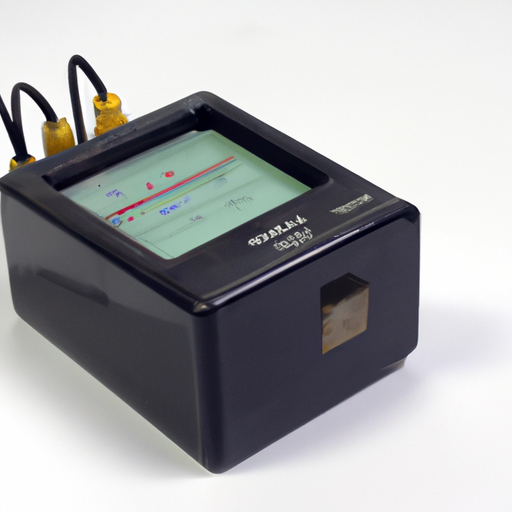
A rotating potential meter, also known as a potentiometer, is a type of variable resistor that is commonly used in electronic circuits to control the flow of electric current. It consists of several key components and modules that work together to provide precise and accurate voltage control. In this article, we will explore the various components and modules that make up a rotating potential meter and discuss their functions and importance in electronic circuits.1. Resistive Element: The resistive element is the most important component of a rotating potential meter. It is a long, thin strip of resistive material that is wound around a cylindrical core. The resistive element is responsible for providing the variable resistance that allows the potentiometer to control the flow of electric current. The resistive element is typically made of materials such as carbon, cermet, or wirewound resistors, depending on the specific application of the potentiometer.2. Wiper: The wiper is a small metal contact that moves along the resistive element to change the resistance value. The wiper is connected to the shaft of the potentiometer and rotates as the shaft is turned. By moving the wiper along the resistive element, the potentiometer can provide a variable output voltage that can be used to control the speed of a motor, the volume of an audio signal, or the brightness of a light, among other things.3. Shaft: The shaft is the part of the potentiometer that is turned by the user to adjust the resistance value. It is typically made of metal or plastic and is connected to the wiper. The shaft is usually equipped with a knob or dial that allows the user to easily turn it to adjust the resistance value. The shaft is an important component of the potentiometer as it allows the user to control the output voltage with precision and accuracy.4. Terminals: The terminals are the connection points on the potentiometer where external wires or components can be attached. The terminals are typically located at either end of the resistive element and are used to connect the potentiometer to the rest of the circuit. The terminals are usually labeled with markings such as "1", "2", and "3" to indicate the connection points for the input voltage, output voltage, and ground, respectively.5. Housing: The housing is the outer casing of the potentiometer that protects the internal components from damage and provides a mounting surface for the potentiometer. The housing is typically made of plastic, metal, or a combination of both materials and is designed to be durable and resistant to environmental factors such as moisture, dust, and temperature fluctuations. The housing also provides a secure enclosure for the resistive element, wiper, shaft, and terminals, ensuring that they remain in place and function properly.6. Mounting Hardware: The mounting hardware consists of screws, nuts, washers, and other fasteners that are used to secure the potentiometer to a circuit board or other mounting surface. The mounting hardware is essential for ensuring that the potentiometer remains in place and does not move or become dislodged during operation. The mounting hardware is typically included with the potentiometer and is easy to install using basic tools such as a screwdriver or wrench.7. Adjustment Mechanism: Some potentiometers are equipped with an adjustment mechanism that allows the user to set a specific resistance value or calibrate the potentiometer for a particular application. The adjustment mechanism may consist of a screw or dial that can be turned to adjust the resistance value, or it may be a digital interface that allows the user to input a specific resistance value using a keypad or touchscreen. The adjustment mechanism is useful for fine-tuning the output voltage of the potentiometer and ensuring that it meets the requirements of the circuit.8. Taper: The taper of a potentiometer refers to the way in which the resistance value changes as the shaft is turned. There are three main types of tapers: linear, logarithmic, and anti-logarithmic. A linear taper potentiometer provides a uniform change in resistance value as the shaft is turned, making it ideal for applications where a linear relationship between the shaft position and resistance value is required. A logarithmic taper potentiometer provides a non-linear change in resistance value, with the resistance increasing or decreasing exponentially as the shaft is turned. This type of potentiometer is commonly used in audio applications where a logarithmic relationship between the shaft position and volume level is desired. An anti-logarithmic taper potentiometer provides the opposite response to a logarithmic taper potentiometer, with the resistance decreasing or increasing exponentially as the shaft is turned. This type of potentiometer is used in applications where an anti-logarithmic relationship between the shaft position and resistance value is needed.In conclusion, a rotating potential meter is a versatile and essential component of electronic circuits that provides precise and accurate voltage control. It consists of several key components and modules, including the resistive element, wiper, shaft, terminals, housing, mounting hardware, adjustment mechanism, and taper. Each of these components plays a crucial role in the operation of the potentiometer and ensures that it functions properly and reliably in a variety of applications. By understanding the components and modules of a rotating potential meter, engineers and hobbyists can effectively incorporate potentiometers into their circuits and achieve the desired level of voltage control and precision.
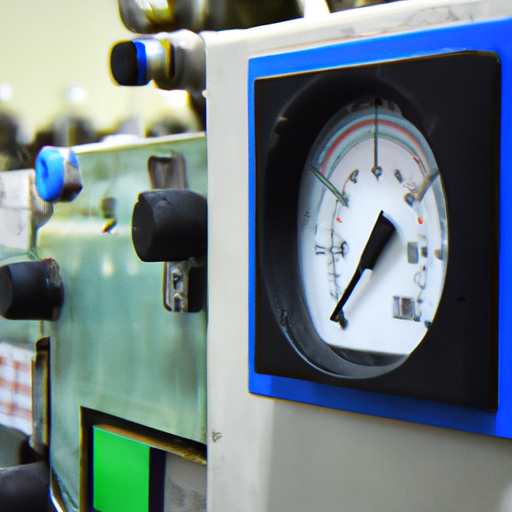
The new Rotating potential meter, also known as a potentiometer, is set to be released in the upcoming months. This innovative device promises to revolutionize the way we measure and control electrical signals in a variety of applications. With its advanced features and capabilities, the new Rotating potential meter is sure to be a game-changer in the field of electronics.One of the key features of the new Rotating potential meter is its ability to accurately measure voltage levels with precision and reliability. This is essential for a wide range of applications, from simple circuit testing to complex industrial processes. The device is designed to provide accurate readings even in challenging environments, making it ideal for use in a variety of settings.In addition to its precise measurement capabilities, the new Rotating potential meter also offers a high level of versatility. It can be easily integrated into existing systems and can be used in a wide range of applications. Whether you are a hobbyist looking to measure voltage levels in a DIY project or a professional engineer working on a complex industrial system, the new Rotating potential meter has you covered.Another key feature of the new Rotating potential meter is its durability and reliability. The device is built to withstand the rigors of daily use, ensuring that it will provide accurate readings for years to come. This makes it an excellent investment for anyone looking for a reliable and long-lasting voltage measurement solution.The new Rotating potential meter also offers a range of advanced features that make it easy to use and highly functional. It features a user-friendly interface that allows for easy operation, as well as a range of customizable settings that can be tailored to suit your specific needs. Whether you are a beginner or an experienced professional, the new Rotating potential meter is designed to meet your needs.Overall, the new Rotating potential meter is set to be a game-changer in the field of electronics. With its advanced features, precision measurement capabilities, and durability, it is sure to become a staple in a wide range of applications. Keep an eye out for its release in the upcoming months, as this innovative device is sure to make a big impact on the world of electronics.